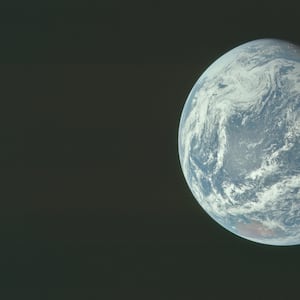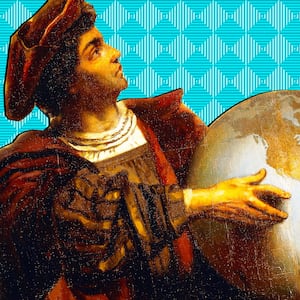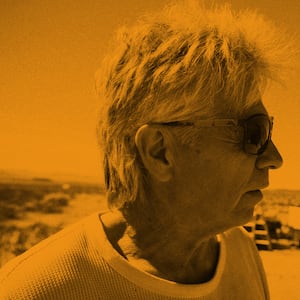MADRID—Probably you’ve never tried to eat a rat. Every now and then rodents, roasted or raw, turn up as gruesome cuisine in horror films, but they’ve never established themselves on modern menus. Five hundred years ago, however, survivors of the voyage of Fernando Magallanes, as we call him in Spain (Fernão de Magalhães in his native Portugal, Ferdinand Magellan in English) had to resort to eating rats to avoid the greater evil of eating each other, a practice with which they’d grown rather familiar on their travels.
Such was the very bitter end of the first circumnavigation of the globe.
Right now is a good time, with all the acts of quincentennial commemoration that have cropped up in Spain and Portugal, to look back on a what was, in truth, una aventura de locos. It’s also important to realize that Magellan’s expedition was the birth of what we now call “globalization.”
Let's see. April 2019. It took me less than 10 seconds to circle the world on Google Earth. If King Charles I of Spain had had such a tool in the year 1519 it would not have been necessary to charter five ships and subject 239 men to all kinds of misfortunes. But of course it was necessary. Spain needed to discover a way west to the Far East to facilitate its trade routes—if that could be done—and the world needed to know once and for all its true identity as a sphere.
In 1519 that fact still was far from clear. Christopher Columbus had tried to sail west to China 27 years earlier, but he didn’t get there. Not even close. As P.J. O’Rourke once put it, “Columbus discovered Caribbean vacations."
Magellan knew what the Far East really looked like. He had sailed previously around the tip of Africa on an eastward heading that took him to the Malay Peninsula. Now he intended to come at it from the other side if—a big if—the globe really was a globe.
Of the five ships and 239 men that sailed from Seville in southern Spain in 1519, only one ship and 18 men returned. They were 18 heroes, no doubt, but above all 18 witnesses.
A few months ago, crossing the waters of the Atlantic in a small boat and amazed by the spectacle of the dolphins playing in her wake, I could not stop thinking about the things those first explorers might have seen and experienced.
Once back on land, I gathered all the available direct documentation I could find. There was the detailed account in the diary of the Venetian Antonio Pigafetta, one of the survivors; there was the chronicle of the trip made by another of them, the pilot Francisco Albo; there was the letter to King Carlos from Juan Sebastián Elcano, who completed the voyage after Magellan himself was killed. I read the interview Maximilian Transyvanus conducted with the crew of the Victoria; the book of Ginés de María about the discovery of what’s now called the Strait of Magellan; and the General Archive of the Indies, which is a hugely valuable source for reconstructing the darker side of that history, because its accounts are hugely human.
Reading the documents that are preserved, there is only one thing certain: those men were sailing toward death. Most knew it. Most were sure of it. Survival would be a miracle.
In this 21st century, that level of incalculable risk is hard to fathom. Today’s entrepreneurs gamble with their money not their lives. Half a millennium ago, the Spanish Crown played with its money, to be sure, but the heroes of the Magellan expedition gambled with their existence.
It was an expedition financed by the monarchy in Madrid but it was also an international enterprise: the two leaders were a Portuguese (Magellan) and a Spaniard (Juan Sebastián Elcano) while the crews of the five ships were made up of men from 10 different nationalities, including Spaniards, Portuguese, Italians, French, and Greeks.
The vessels that originally set sail were Magelllan’s flagship, the Trinidad; the slightly larger San Antonio, the Concepción, the Victoria, and the Santiago.
Four months after leaving Spain they touched the Americas, specifically South America, where today we’d find Rio de Janeiro. There the Venetian, Pigafetta wrote in his diary of a place plagued by "an infinite number of parrots." The locals were fascinated by the steel axes and knives offered by the Europeans, technology they had never seen, and promised the adventurers "one and even two of their daughters" in exchange.
This led to some observations that were both bawdy and bizarre.
"The young women often came on board to offer themselves to the sailors in order to obtain some present: one day one of the prettiest also went up, undoubtedly with the same objective, but having seen a nail the size of a finger and believing that nobody was watching, she took it and very quickly placed it between the two lips of her sexual organs." The chronicler recalls that an anthropological debate was unleashed among the crew: Did the girl do it to try to hide it and steal it or simply to decorate herself in some fashion?
That would not be the last of Pigafetta’s sexual observations.
The Brazilian chiefs known as caciques allowed the adventurers to celebrate mass on land and many of the locals ended up converting to Christianity, which was as alien to them as the axes and the knives. More importantly, they heard about the the dignity of human life and the concept of mercy, both of which, according to the chroniclers, were scarce in those parts (and subsequently scarce as well under the regimes of the Iberian colonizers).
The first attempt to find entry to the South Sea failed. The passage was not really an open road: it turned out to be the estuary of the Río de la Plata, the silver river, which led to some considerable, and dangerous, frustration among the mariners.
In March 1520, near the southern tip of South America after eight months of navigation, when we now know they only needed a few days to reach Antarctica and pass through the strait there before bad weather would set in, Magellan decided to winter in the Bay of San Julián.
Food was growing scarce. The cold grew severe. Morale was bad and getting worse. Many of the crews in Magellan’s little armada were tired of the voyage, complaining about the distribution of food, but Magellan, who had decided to keep to his westward course or die trying, demanded that they show the courage needed to carry the expedition forward.
This was a delicate moment. Magellan had ordered that food be rationed as much as possible, but he gathered his men and harangued them, telling them they still had plenty on board. They had good fishing and good hunting, firewood, water, as well as supplies of “biscuits and wine.”
They didn’t trust him, didn’t believe him, and his speech did little to calm the mutinous atmosphere. At night, the cabals and conspiracies grew. The captains of all the ships except the Santiago, which was oblivious to what was happening, rose up against Magellan and demanded that he return to Spain.
The Portuguese admiral knew that on the flagship Victoria there were many crewmen on his side and decided to charge that ship, kill its mutinous captain, and recover the obedience of the crew. He condemned to death Quesada, the captain of the Concepción, and banished and abandoned Juan de Cartagena, who was in charge of the San Antonio, the epicenter of the uprising.
Magellan finally settled the matter by judging the mutineers in a court martial and pardoning some 50 of them. This was less a matter of Christian mercy than maritime pragmatism. He needed them to continue the expedition successfully.
Days later, Magellan lost the ship Santiago, wrecked among the rocks at the mouth of what is now known as the Santacruz River near the southern tip of South America. The crew managed to save themselves but they stayed two months at the site of the wreck trying to collect the supplies that floated up.
Two castaways from the Santiago had made it back to the rest of the expedition to deliver news of the ship’s sad end. They walked for a week, eating wild plants and raw seafood and were in rough shape. "They arrived so disfigured by hunger and their travails that their friends did not recognize them," says Ortega. Expeditions were mounted taking food to the survivors of the Santiago, writes Pigafetta, but the trip was exhausting. Even though the distance was only about 100 miles, the path was full of thorns and weeds and they “had nothing to drink but ice.”
In the middle of winter the Magellan expedition discovered on the coast "certain Indians” of "great stature."
“We saw a giant who was on the shore, quite naked, and who danced, leaped, and sang, and while he sang he threw sand and dust on his head,” writes Pigafetta. “Our captain sent one of his men toward him, charging him to leap and sing like the other in order to reassure him and show him friendship. Which he did. Immediately the man of the ship, dancing, led this giant to a small island where the captain awaited him. And when he was before us, he began to marvel and to be afraid, and he raised one finger upward, believing that we came from heaven. And he was so tall that the tallest of us only came up to his waist.”
The friendship with these Indians allowed the explorers to stock up on firewood and food—including the meat of the llama-like guanacos—and thus alleviate their suffering. These huge Indians were called Patagonians.
In October 1520, after wintering, Magellan ordered the ships San Antonio and Concepción to advance along a route "that looked like an arm of the sea." They had found the strait but they did not know it. Once again, despair and dissension set in. The San Antonio, the biggest ship in the fleet, left the expedition in secret.
Meanwhile, Magellan had sent a boat through the canal to discover if it had an outlet to the sea. It did. Euphoric, they baptized the point at which they entered the strait the Cape of 11,000 Virgins, after the legend of Saint Ursula and her martyred companions. Her feast day was October 21. The westernmost point of land they called the Cape of Desire. Then they set sail across the vast ocean they called “the peaceful sea,” the Pacific.
Now the true horrors set in. After sailing for "three months and 20 days without taking on board provisions or any other refreshments,” Pigafetta tells us, they “ate only old biscuit turned to powder, all full of worms and stinking of the urine which the rats had made on it, having eaten the good. And we drank water impure and yellow. We ate also ox hides which were very hard because of the sun, rain, and wind. And we left them four or five days in the sea, then laid them for a short time on embers, and so we ate them. And of the rats, which were sold for half an écu apiece, some of us could not get enough.”
A strange disease–scurvy–was spread among the crew: their gums swelled to the point of overwhelming the teeth in both jaws, preventing them from eating. A score of sailors died of the disease, as did a Patagonian giant who had joined them and was cared for by Pigafetta.
Such was the harshness of that part of the journey that the chronicler wrote, “I believe that nevermore will any man undertake to make such a voyage.”
In the spring of 1521 the expedition landed on the island of Zubu (now Cebu) and reached an alliance with its king, who converted to Christianity and swore allegiance to the king of Spain. With that, all the inhabitants of the island were baptized, they demolished their idols and put an end to their "strange ceremonies."
Among those rituals, the Italian chronicler notes, when a chief died in Zubu, he was watched over at home accompanied by "the most respected women of the place." The main wife "sets her mouth, her hands and her feet to those of the dead man. And while the other woman is cutting off the hair, the latter one weeps. And when she has ceased cutting, the latter one sings.” The ritual lasted five days.
It also surprised the adventurers that the natives of these islands had their foreskins “closed with a small cylinder of gold” and “never remove this ornament, not even during intercourse.” As one of the chroniclers wrote with unusual humor, given the harsh circumstances: "Despite such a strange device, all women preferred us over their husbands ..."
Later in the voyage, Pigafetta listened to the many tales told by Moro pilots helping steer the Victoria through shallow seas. From them he learned that, “When the young men of Java are in love with any gentlewoman, they bind certain little bells with thread under their foreskin.” That is, between the penis and the foreskin. “They go beneath their loved ones’ window and, making pretense to urinate and shaking the member, they ring the little bells until their loved ones hear the sound. Then they come down immediately, and they take their pleasure, always with those little bells, for their women take great delight in hearing those bells ring within.”
But before they could leave Zubu, a new and devastating tragedy befell them.
Magellan wanted to seal the alliance with the king of Zubu by attacking the neighboring island of Mactan, whose king was an enemy of Zubu and would not convert to Christianity.
Magellan led his men ashore, where they burned some 30 houses belonging to the locals, who vastly outnumbered them and who counter-attacked relentlessly. Forced back into the water, Magellan and his men continued fighting knee-deep in the sea, but the artillery on board their ships was out of range and useless. A poisoned arrow hit Magellan in the leg, then a spear caught him in the arm, then another spear, and he went down surrounded by the enemy, according to Pigafetta. “All at once rushed upon him with lances of iron and of bamboo and with these javelins, so that they slew our mirror, our light, our comfort, and our true guide. While those people were striking him, he several times turned back to see whether we were all at the ships. Then, seeing him dead, as best we could we rescued the wounded men and put them into the boats which were already leaving.” On April 27, 1521, Magellan died at the age of 41, but his body was never recovered.
Afterward several more the men were lost when they were offered a friendly feast only to be betrayed and killed.
Having reduced the number of survivors, those who remained decided to reduce the number of ships to two, setting fire to the Concepción, sailing on aboard the Trinidad and the Victoria. On the way to the Moluccas, they chose Juan Sebastián Elcano as their leader.
In November 1521 they arrived at the spice islands, the Moluccas, which the Portuguese had reached earlier via the Indian Ocean, and which had been Magellan’s goal all along. They had sailed west, halfway around the world on uncharted seas, to reach them, and they received honors from King Almanzor.
The following month, with the ships loaded with cloves, they were preparing to return to Spain but the Trinidad began taking on water, and had to stay behind for repairs, eventually turning back east across the Pacific toward Panama. The Victoria continued west toward Africa and beyond, to Spain.
In the midst of strong winds, it took Victoria seven weeks to get past the Cape of Good Hope. Seven weeks in which a good part of the crew, sick and hungry, demanded Elcano land in Mozambique, where the Portuguese had established themselves. But despited Magellan’s nationality this was not a Portuguese expedition and Elcano was not about to let himself, his men and his hugely valuable cargo fall into their hands. He forced everyone to continue the route to the west.
After two months without seeing land and a score of deaths on board, they were forced to land on one of the Cape Verde islands, another Portuguese outpost, in search of water. Elcano sent 13 men to try to move the Portuguese governor by telling them of his extreme situation. They were arrested and the Portuguese tried to attack the Victoria. Elcano, who was following the negotiations, then ordered the anchor raised, abandoned the 13 men, and sailed on "with imponderable despair,” according to one of the chroniclers.
On September 6, 1522, emaciated, hungry, sick and exhausted from fatigue, after a voyage of almost three years, the Victoria with Elcano in command arrived back in Spain at the port of Sanlúcar de Barrameda with the 18 survivors on board.
They had completed the first circumnavigation of the globe in history, of that there was now no doubt. Only fools, fantasists or fanatics would deny it.
They did not disembark until the next day when they were towed up the Guadalquivir River to Seville. As crowds gathered to receive them, the 18 walked, "each carrying a candle in his hand," to the chapel of the Virgin in the old Cathedral of Seville to whom they had pledged their faith during the worst moments of the voyage.
That September of 1522 the world changed forever. The expedition had established the dimensions of Earth, had discovered the Strait of Magellan, had crossed for the first time the largest ocean in the world, which they called Pacific because in its waters they did not suffer storms, had confirmed the spherical nature of the planet and discovered there were different zones of time, had found archipelagos of the Pacific large and small, including the Philippines, and had revealed that all the seas are connected to each other in a global world. They had broken the endurance record on the high seas, had traveled half the planet without stopping, and they had opened the way for communication on a planetary scale.
The fifth centenary of the adventure is a good time to remember the solemnity and transcendence with which Juan Sebastián Elcano wrote the day of his return in a letter addressed to the king who had funded the adventure, and who had become in the meantime Holy Roman Emperor Carlos V, the most powerful sovereign in Europe or, indeed, on Earth:
"Your Majesty will know better than anyone that what we ought most to value and hold on to is that we have discovered and sailed the whole roundness of the world, that going to the West, we have returned from the East.”
Translated from the Spanish and edited by Christopher Dickey. Some of the quotations are extracted from R.A. Skelton's translation of Magellan's Voyage: A Narrative Account of the First Circumnavigation, by Antonio Pigafetta.




